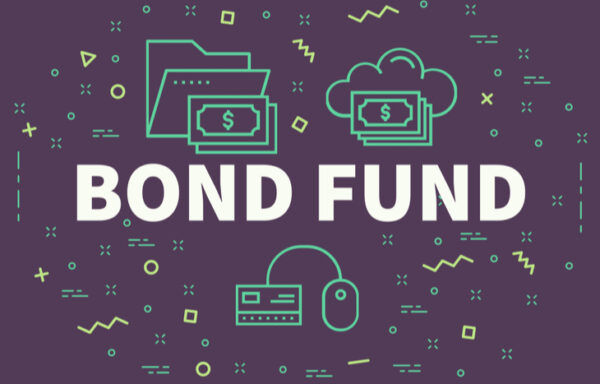What is an Agency Bond?
If you’re familiar with government treasuries, you’ve also likely heard of agency bonds. What is an agency bond? These bonds come from a government-backed entity and typically pay a higher interest rate than treasuries. However, they’re not always backed by the full faith and credit of the United States government. Agency bonds tend to be a popular debt equity for larger funds because their rate of return tends to be better than treasuries.
Agency bonds aren’t something most individual investors hold, since they’re issued in increments of $5,000, starting with a $10,000 investment. Most pay a semi-annual fixed coupon, in either a fixed or floating rate, depending on the bond. Here’s a look at what they are, how they work and what makes them an attractive investment for funds.

What is an Agency and How do Agency Bonds Work?
An agency is a government organization or a government-sponsored entity (GSE) with the express purpose of social improvement. This can encompass anything from affordable housing projects to agricultural developments. To fund these initiatives, organizations and GSEs issue debt, called agency bonds.
Two of the largest GSEs to issue agency bonds are the housing authorities, Freddie Mac and Fannie Mae. They issue mortgage-backed securities (MBS), which are a form of agency bond. MBS’ are the most prevalent type of agency bond; however, they’re not the only one. An entity like the Farm Credit System issues different types of debt securities to provide loans to farmers, such as for crop insurance, which is another form of this type of bond.
Two Types of Agency Bonds
While agency bonds represent a broad scope of different debt securities, there are two chief types investors concern themselves with:
- Federal Government Agency Bonds. These agency bonds are mortgage-backed securities offered by way of the Federal Housing Administration (FHA), Small Business Administration (SBA) and the Government National Mortgage Association (GNMA). They are backed by the full faith and credit of the United States Government, which makes them extremely safe investments. That said, they’re callable bonds and tend to be less liquid than treasuries, while offering a marginally higher interest rate.
- Government-Sponsored Enterprise Bonds. These bonds come from GSEs and don’t carry a guarantee. This is because they don’t stem from government agencies—only those subject to government oversight. They can include MBS’ and other forms of debt securities, and tend to vary widely in terms of rate and term. They’re more liquid than other agency bonds and come with a higher yield. Some are even offered as no-coupon discount notes, which offer even greater rates of return based on maturity.
As mentioned, most agency bonds come with a hefty buy-in price, which makes accessing them directly out of the realm of possibility for most retail investors. Instead, direct agency bond purchases tend to come from institutions and managed funds. That said, retail investors can gain exposure to agency bonds through a broker-dealer or though funds with these assets under management.
Agency Bond Structures to Consider
Agency bonds have different structures depending on the issuer and the type of bond. Investors need to pay close attention to the bond structure when investing, since it can dictate everything from rate of return to the risk associated with the bond:
- Fixed coupon. These bonds pay a fixed coupon quarterly, annually or semiannually.
- Floating coupon. Interest rates adjust with time and are usually tied to treasuries.
- Zero coupon. Called “discos,” they’re sold at a discount and redeemable at maturity.
- Callable bonds. The issuer can recall the bond early if interest rates drop.
Fixed coupon bonds represent a majority of the market; however, interest rate volatility can prompt a rise in other types of bond structures. Investors should survey the interest rate landscape and bond products to understand issuer sentiment before investing in these bonds.
The Pros and Cons of Agency Bonds
There are equal and offsetting pros and cons for these bonds. They tend to be on-par with other major debt securities, including treasuries. Here’s a quick look at their advantages and disadvantages.
Advantages (Pros)
- Compared to corporate bonds, there’s minimal debt risk associated with agency bonds.
- Most agency bonds, while not backed by the U.S., offer a similar creditworthiness.
- Agency bonds—particularly from GSEs—have a higher rate of return than treasuries.
- Most agency bonds have high liquidity that makes them an attractive investment.
- Interest payments from agency bonds can be exempt from state and local tax.
Disadvantages (Cons)
- Interest rate risk could send interest rates rising, thus lowering the value of the bond.
- Although rare, default risk is a possibility for debt not backed by the U.S. government.
- Minimum capital requirements are high for direct exposure to these types of bonds.
- The bond structures can be complex for novice investors or new debt investors.
The bottom line is that these bonds tend to offer lower risk, higher reward for debt investors. They differ from corporate bonds in their stalwart nature, while maintaining a great level of liquidity not seen from treasuries.
Should You Invest?
When it comes to debt securities, these bonds offer a unique prospect. What is an agency bond? For many, they represent the best of both worlds in debt investing: the safety of treasuries and the ROI of corporate bonds. But are they worth it?
To learn more, sign up for the Welathy Retirement e-letter below. This daily newsletter provides investment education and bond investing tips for traders of all experience levels.
For individual investors, direct exposure isn’t often in the cards. Instead, agency bond exposure through a fund is much more realistic. If you’re looking for balance or need a more conservative portfolio allocation, agency bonds are well-worth the consideration.





